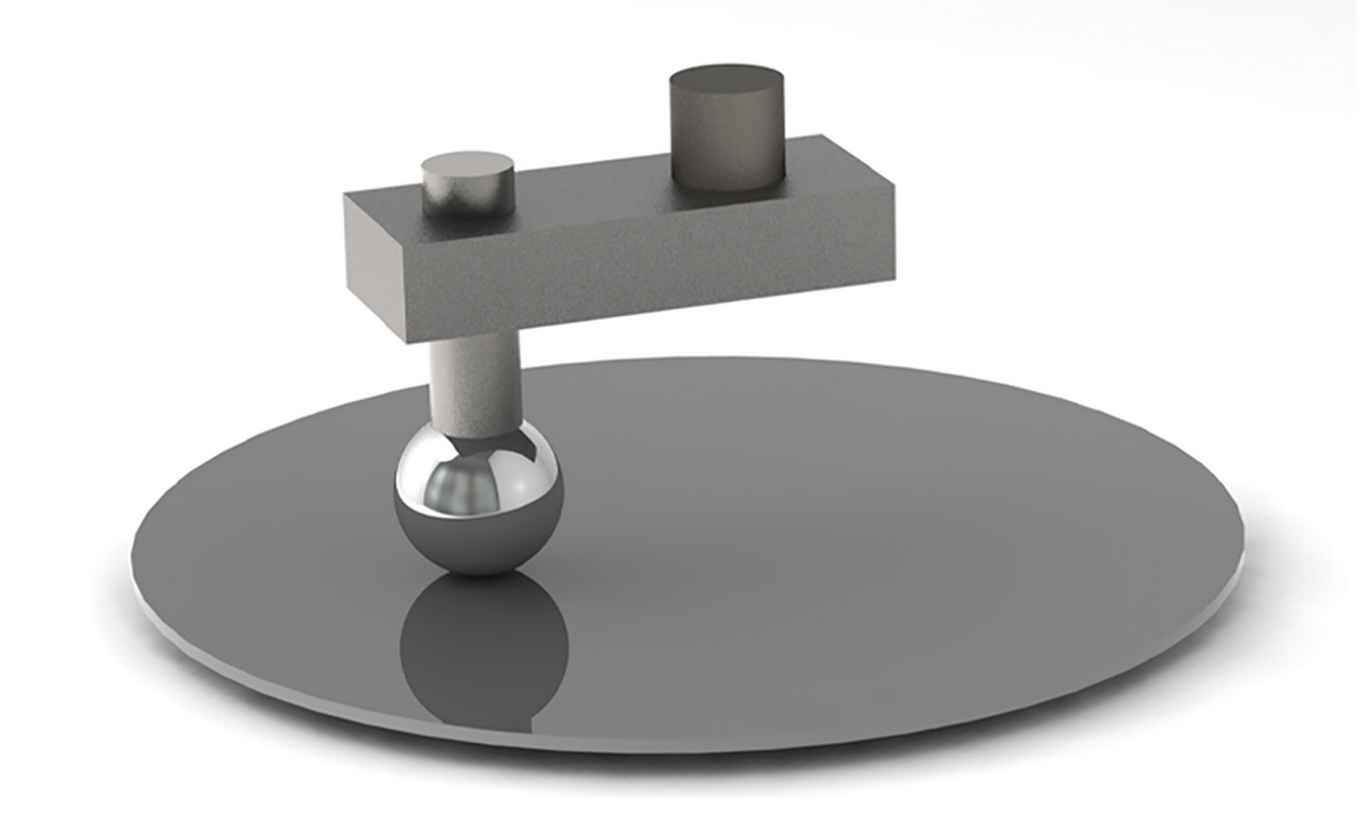Why some wet surfaces are less slippery
21 December 2022

The research, carried out by PhD student Liang Peng in collaboration with five physicists and chemists from UvA, ARCNL and the German Max Planck Institute for Polymer Research, was published in Physical Review Letters this week. Peng and collaborators use a clever device, displayed in the image above, to measure the friction between a silicon sphere and a silicon wafer under different wet circumstances.
The researchers noted that using heavy water, for which the hydrogen bonding is stronger, the sphere expericenced a larger friction. This led them to the conclusion that this hydorgen bonding would lead to the observed increase. This mechanism differs considerably from other mechanisms such as capillary bridges that had been previously proposed to explain the friction, and is much more successful in explaining the observations.
For Physics Magazine, Michael Schirber wrote a Focus Story about the results which can be read below:
Publication
Nonmonotonic Friction due to Water Capillary Adhesion and Hydrogen Bonding at Multiasperity Interfaces, Liang Peng, Feng-Chun Hsia, Sander Woutersen, Mischa Bonn, Bart Weber, and Daniel Bonn. Phys. Rev. Lett. 129 (2022), 256101